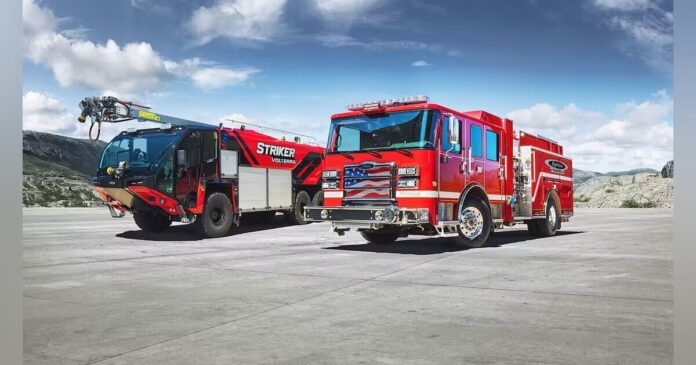When you scan an airport, your eyes focus almost exclusively on the planes landing or taking off. However, if you take a closer look, you’ll also notice many other vehicles and pieces of equipment around as well, all of which serve specific and important functions. Known as Ground Support Equipment or GSE, they are essential in many ways for aircraft rescue and firefighting operations.
Response Time Drills
When a catastrophic event happens at an airport, such as a plane crash or an engine catching fire, GSE is essential because the personnel operating the equipment have performed numerous response time drills and can be on the accident scene within seconds to begin lifesaving procedures. Since firefighting events do not happen often at airports, aviation firefighters usually perform other duties at airports, the most common of which is security services.
Brake Inspections
GSE is also needed for rescue and firefighting operations after a plane experiences an abnormal landing. It can happen if a plane lands with at least one engine malfunctioning or wholly inoperable, landing gear that fails to disengage into its proper position or other issues that may arise. After abnormal landings, firefighters position firefighting equipment nearby to perform brake inspections on an airplane. When a plane has an engine out, the brakes are forced to absorb much more energy due to a lack of reverse thrust from the engines.
De-Icing Operations
Since planes such as commercial jets have engines and other components that operate at very high temperatures and thus need certain types of hydraulic fluid such as Skydrol 5 to guard against erosion that can result in mechanical breakdowns, GSE operations such as de-icing take on an even more important role in aircraft safety. At smaller airports that are less busy, de-icing vehicles can move around from plane to plane, spraying de-icing fluids of ethylene or propylene glycol on wings and control surfaces. At larger airports with more traffic, stationary de-icing stations are positioned at runway entrances so planes can be de-iced only minutes before departure.
In-Air Emergencies
Should an aircraft declare an in-flight emergency, such as an engine that dies or a fire that occurs on the plane, GSE will be critical to help minimize damage to the plane and help save as many lives as possible. Once air traffic control has been notified of the plane’s situation by the pilot, firefighting personnel will take up positions near the runway and follow the airplane down the runway as it descends. Suppose a fire does break out during landing or is already occurring on the plane. In that case, firefighters will be only yards away and have the equipment needed to control the situation as quickly as possible.
Towbarless Tugs
Perhaps the most powerful vehicles at airports, towbarless tugs pull the aircraft into hangars or other areas as needed. The tug is positioned directly underneath the aircraft’s cockpit when towing the plane. Should a fire break out in the tug’s engine, the result could be significant aircraft damage. Non-flammable hydraulic fluid is usually used in these GSE vehicles since a system failure that had flammable hydraulic fluid spraying a tug’s hot engine and the aircraft’s engine could lead to a massive fire or even explosion to guard against this.
Cargo Loaders
Since large amounts of cargo are loaded onto commercial jets and other aircraft types, great care needs to be paid to the engine systems of these pieces of GSE. Next to airplanes themselves, cargo loaders are perhaps the most complex hydraulic systems of any equipment found at an airport. Since these systems contain liquids that can be very explosive, safety and maintenance personnel regularly inspect the hydraulic lines of cargo loaders to ensure no failure is imminent. If a failure were to happen, large amounts of smoke and flames would be present, making getting to safety much more problematic.
When aircraft rescue is needed, precious seconds cannot be wasted. With well-trained personnel and the right equipment at the airport, planes and passengers can be saved from what may have otherwise been a horrific accident.





































